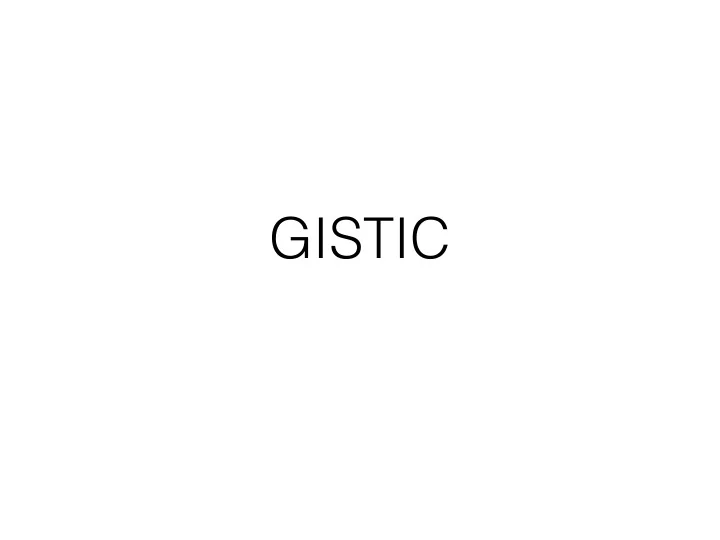

GISTIC
Somatic Copy Number Alterations SCNAs
Step 1 Copy Number Segregation Circular Binary Segregation (Olshen ’04)
Step 2 Identification/Separation of Underlying SCAs Ziggurat Deconstruction
ZD performs this likelihood maximization by iterating between two complementary procedures: Deconstruction: Converts segmentation profiles into the most likely history of underlying SCNAs, using an estimate for the background rate of SCNAs as a function of length and amplitude (e.g. Pr( e ) = f( L , A ) for SCNA e of length L and amplitude A ). Background Estimation: Updates the background rate of SCNA formation (e.g. Pr( e ) = f( L,A ) ) given the sequence of SCNAs inferred from the current deconstruction.
Length-based Separation of Focal and Arm-Level SCNAs
Step 3 Scoring SCNAs in Each Region According to Likelihood of Occurring by Chance
GISTIC GISTIC2.0 G = -log(Probability | G Score G = frequency x amplitude Background) Focus Markers Markers or Genes computed by random computed by random P-val permutation of markers permutation of markers or across genome bins across genome
Step 4 Defining Independent Genomic Regions Undergoing Significant Levels of SCNA
GISTIC GISTIC2.0 Peel Off Greedy Arbritrated Wij: Si if segment i cov. by j Wij 0 else
Step 5 Accurate Definition of the Copy Number Profile In Each Sample
Recommend
More recommend